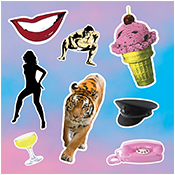Duran Duran’s ‘Paper Gods’ is more experimental than serious

Used with permission under fair use.
Duran Duran has grown anticipation among their fans in excitement for their newest release only to initially fail at meeting the expectations of listeners who just can’t leave the 80s behind. Although, after a couple listens the album fully comes together.
In Duran Duran’s 14th studio album, “Paper Gods”, the popular, makeup wearing 80s heartthrobs have returned.
“Paper Gods” was released Sep. 11 worldwide ending their dreaded musical hiatus since their 2010 album, “All You Need Is Now.” Most albums of Duran Duran are easy to get into with their bubble-gum pop sound, but it took a few listens of this album to really appreciate it.
The album begins with the title track, “Paper Gods” and features English musician Mr. Hudson, who is most known for his song “Supernova (feat. Kanye West)”. The song begins slowly and with an almost ominous tone to the song, but picks up quickly after Simon Le Bon, lead vocals, begins singing. An unexpected techno beat comes in, presumably in an another experimental attempt to modernize their music, which makes the song seem more like a secondary song rather than a title track.
The following track, “Last Night In The City,” begins with the upbeat vocals of Canadian singer, Kiesza, who is closely followed by Simon Le Bon. Revisiting the traditional 80s feel of the band, “Last Night In The City” continues the album’s trend of techno beats making it an easy song to dance along to.
The album’s single, “Pressure Off (feat. Janelle Monáe and Nile Rodgers),” was released June 17, and brings back the classic Duran Duran synthesizer sound of Nick Rhodes and the funky bass riffs of John Taylor to flawlessly combine past in present in this peppy pop song and bring listeners a sense of nostalgia.
Unexpected vocalist, Lindsay Lohan, joins Simon Le Bon by singing backup vocals in their track, “Danceophobia.” She begins by going along with the theme of the song, being afraid of dancing apparently, by telling a patient that they have a case of ‘danceophobia.’ She comforts the patient by assuring them that she’s seen it all before, “don’t be afraid, I’ve seen these symptoms before. 10-20 new cases each week. We call this condition, ‘danceaphobia.’” She later joins in with a few backup vocals adding to the club-like feel of this song.
Their final track of the album, “The Universe Alone,” treats listeners to an orchestral introduction with a calm tone that makes the listener feel as if they’ve just stepped into a ballroom. The title of the song reigns true to the feel of the song; a feeling as if you are the sole person in a grand and vast room. The song later picks up into a more synthesized sound reminding you that yes, you are still listening to Duran Duran. The song starts to end with an overly intense bass, which like the first song, seems more experimental and more of a secondary song rather than a final number.
An initial reaction to the new album of a favorite 80s band was slightly disappointing due to the frequent guest vocals and the great difference to their early music, but after a few listens the songs that once housed indifference became more enjoyable. Still, comparing “Paper Gods” directly with an early album, such as “Rio”, would be a bit of a stretch given the fact that “Paper Gods” appears to be more of an experimental album that doesn’t seem to be received as well as their work in the 80s.
by LINDSAY LUCAS





